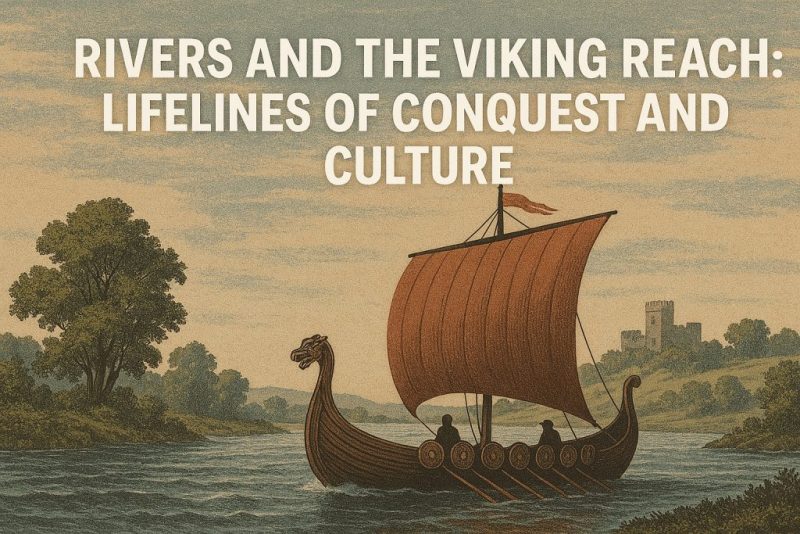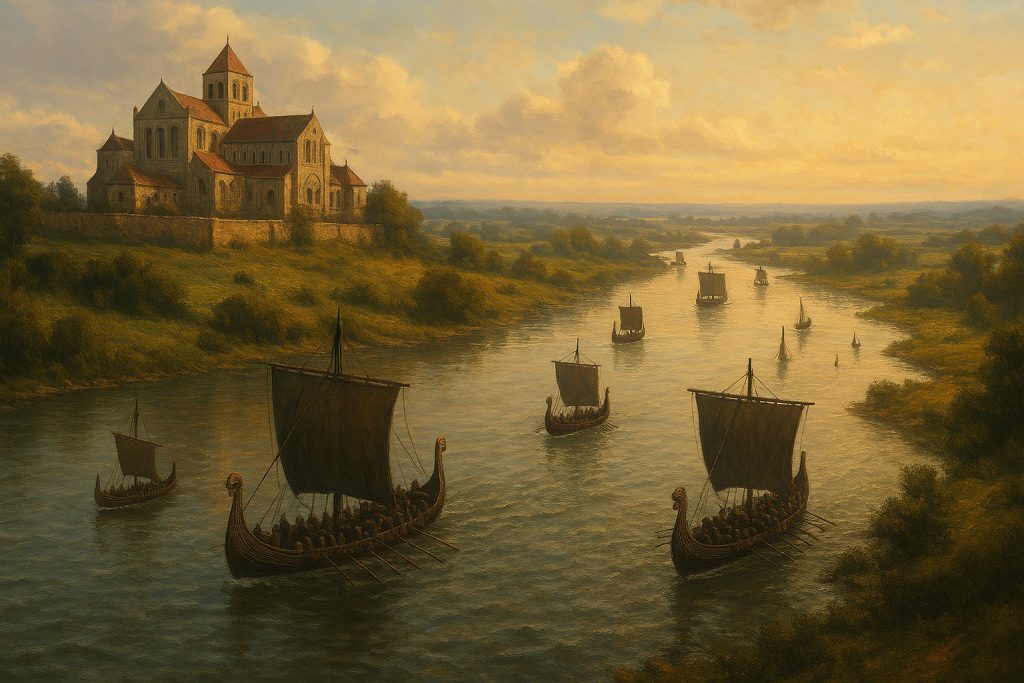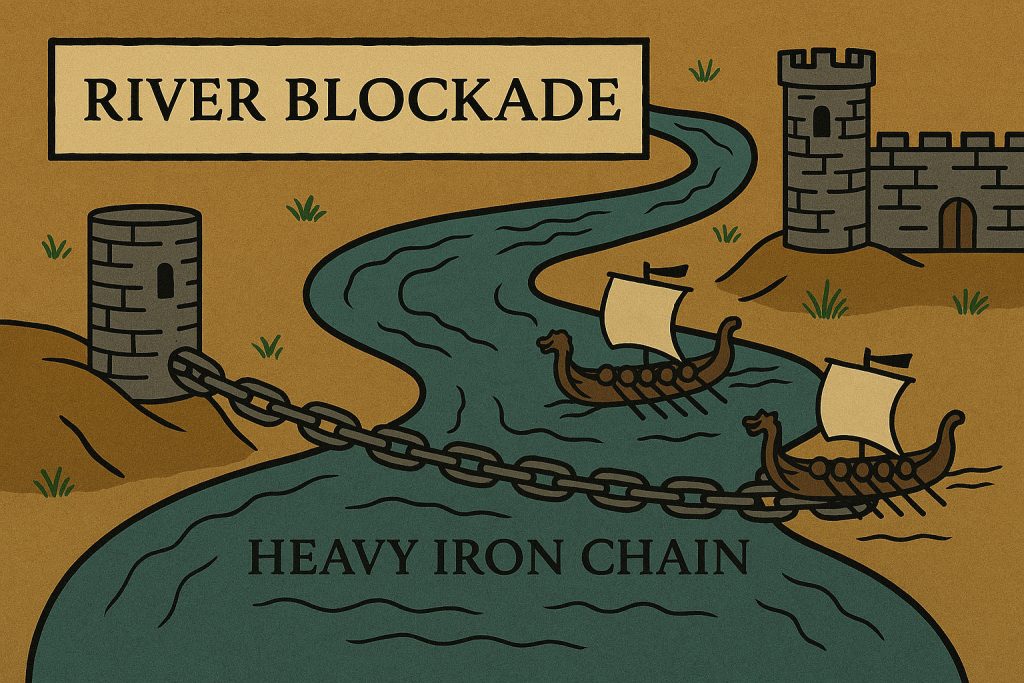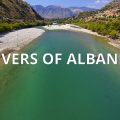Rivers and the Viking Reach: Lifelines of Conquest and Culture

Discover how rivers like the Thames and Seine powered Viking raids and settlements—bringing war, trade, and Norse culture deep inland.
To the Vikings, rivers were more than just natural features—they were gateways to glory, highways of conquest, and lifelines of survival. In the sagas of Norse exploration and warfare, the ocean often takes center stage, but it was the winding rivers of England and Francia that truly unlocked the heartlands of Europe for these seafaring warriors.
⚔️ Rivers as Invasion Routes
The Viking longship was a marvel of engineering: lightweight, shallow-drafted, and swift, capable of sailing across oceans and gliding up narrow rivers with equal ease. These vessels allowed the Norse raiders to strike far inland, bypassing fortified coastal defenses and catching settlements by surprise.
In England, rivers like the Thames, Trent, Humber, and Ouse became natural corridors for Viking incursions. The raid on Lindisfarne in 793 shocked Christendom, but it was just the beginning. Over the next century, the Vikings would sail up the Thames to sack London, penetrate Mercian and Northumbrian territories via the Trent and Ouse, and even establish semi-permanent settlements in river-rich regions of the Danelaw.

Across the Channel in Francia (modern-day France), rivers like the Seine, Loire, and Garonne became prime Viking thoroughfares. In 845, legendary chieftain Ragnar Lodbrok sailed up the Seine and laid siege to Paris, extorting a massive ransom from King Charles the Bald. These raids became so frequent that the Frankish kings eventually ceded territory—Normandy—to the Norse in a bid to stop them.
🛶 Longships: Perfect for River Warfare
The longship’s unique design was key to Viking dominance. Its shallow hull allowed it to navigate rivers just a few feet deep, while its symmetrical bow and stern meant it could reverse direction quickly—a crucial asset when retreating from fortified positions. Vikings could pull their ships ashore, carry them across land if needed, and even use them as floating bases.
These vessels weren’t just tools of war—they were symbols of power and extensions of home. Entire families traveled in longships, and rivers became the Viking roads for trade, exploration, and even diplomacy.
River Blockades: Defending the Heartlands
As the Viking longships glided swiftly up the rivers of England and Francia, bringing warriors deep into unsuspecting territory, local rulers began to realize that the threat didn’t always come from the sea—but from inland waters. In response, a clever and often desperate form of defense emerged: the river blockade.
These blockades were designed to halt or slow Viking ships before they could reach key towns, monasteries, or trading hubs. The most iconic method was the use of massive iron chains—stretched across the width of a river and anchored on both banks. Raised or lowered using winches or pulleys, these chains could be hidden beneath the water’s surface and suddenly lifted to rip through the hulls of approaching longships or trap them like fish in a net.

One of the most famous examples comes from Paris in 885, during the massive Viking siege. To protect the city, the Franks fortified bridges and likely employed underwater obstacles and chains across the Seine River to delay the Norse advance. It worked—the Vikings were forced into a long siege rather than a quick strike, giving the defenders time to rally.
In England, while fewer detailed records survive, similar strategies were likely used in London on the Thames and in fortified river ports along the Trent and Humber. Defensive blockades also included sunken logs, stone weirs, and fortified booms made of chained boats or wooden palisades. These not only blocked passage but created choke points—ideal for ambushes from archers or militias waiting on the banks.
River defenses weren’t always physical. Sometimes, bridges themselves were weaponized—built low and strong to prevent ships from passing beneath, or reinforced with towers that bristled with archers and boiling oil.
While not foolproof, these blockades were part of a growing strategy to resist the Norse tide. They mark a pivotal moment in medieval military engineering—where geography met ingenuity, and rivers became battlegrounds not just of speed, but of smarts.
🌍 Rivers as Cultural Connectors
Wherever the Vikings went, they didn’t just raid—they settled. Rivers enabled the Norse to establish trade routes, exchange goods, and spread their culture deep into Anglo-Saxon and Frankish territories. Settlements along riverbanks became hubs of Norse influence, and many place names in England today—especially in the east and north—still bear the linguistic fingerprints of Viking settlers.

In fact, many Viking towns in England, such as York (Jorvik), owe their strategic importance to their river access. These waterways allowed the Norse not only to dominate militarily but to weave themselves into the economic and social fabric of the land.
🧭 Rivers: The Secret to Viking Success
The Viking Age wasn’t just a saga of sea-storms and heroic raids—it was also a tale of rivers, of inland ambition, and of boats that could conquer both ocean and stream. Without the Thames or the Seine, the Viking story in England and Francia might have been very different.
So next time you walk along the quiet banks of an English river or visit a town with Norse roots, imagine the silent approach of longships in the morning mist—shadows gliding over water, changing the course of history.



